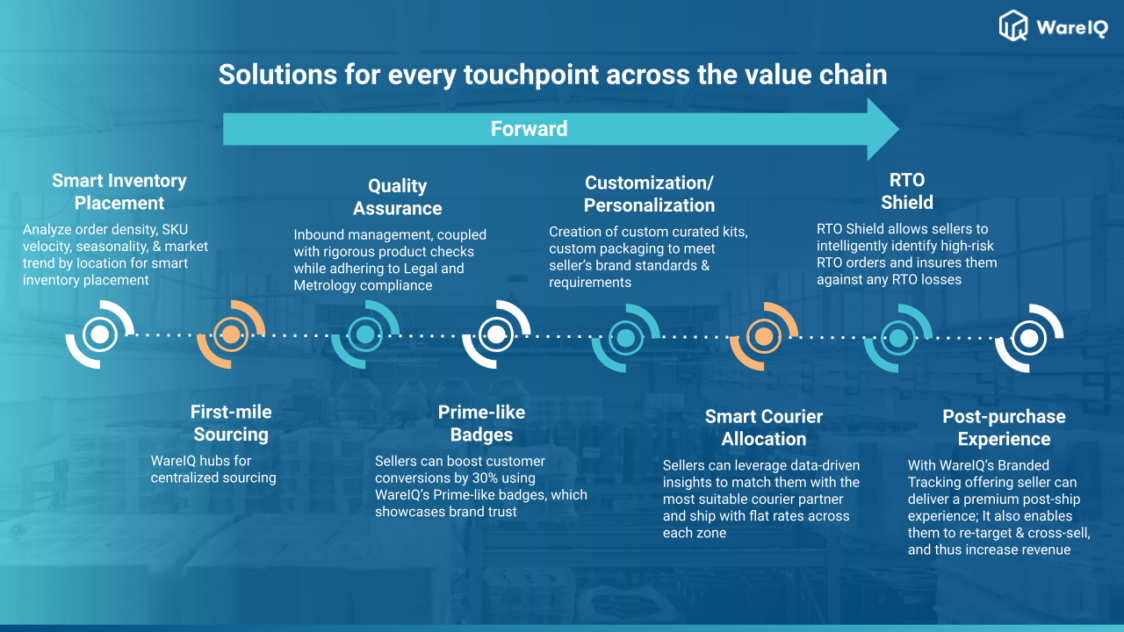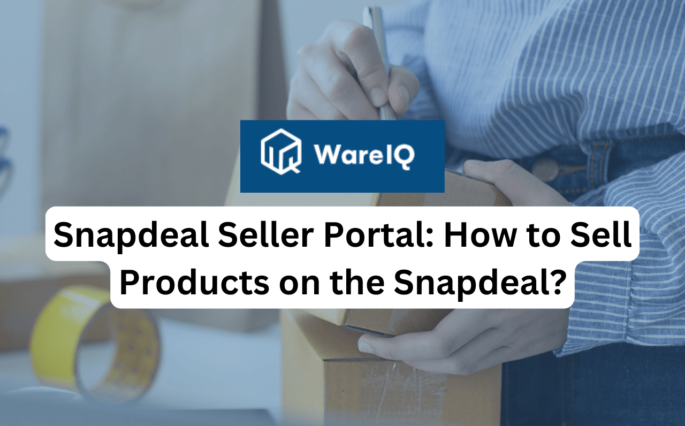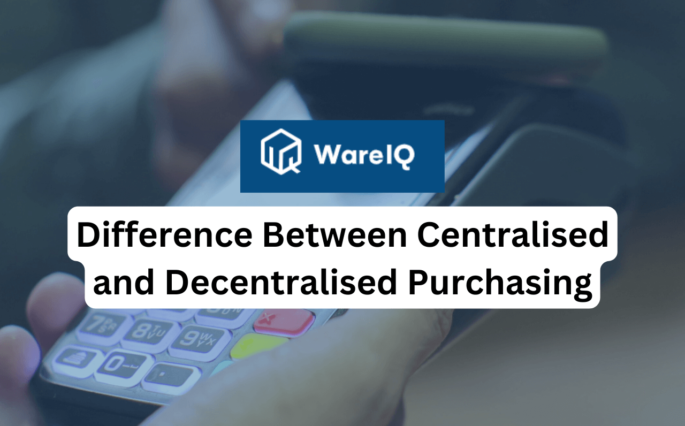What is Cost Per Unit? How to Calculate It & Top 5 Minimizing Strategies 2025

A business’s survival depends on the bottom line. Whether your business is into providing products or services, the key metric you have to monitor is the net profit. Net profit is defined as the difference between total revenue and total cost. Analyzing revenues and expenses gives a clear indication of whether a company is performing and working effectively. A key way of increasing your profit margins is to calculate cost per unit and find ways of reducing it as much as possible.
By applying the cost per unit formula, businesses can identify inefficiencies in their production or service delivery processes. This insight allows for more accurate pricing strategies and better financial planning.
In this guide, we will learn how to calculate the cost per unit and explore strategies to minimize it effectively.
What is the Meaning of Cost Per Unit?
Cost per unit is the sum of all the expenses that a company incurs to produce, store and sell one unit of a product or a service. It is also known as the cost of goods sold. There are various elements to calculate cost per unit. They are classified into two groups – fixed costs and variable costs. In order to calculate cost per unit, the first step is to ascertain operational profitability.
Fixed Costs: Fixed costs are those that stay the same irrespective of the volume of production. Examples include capital equipment, rent, insurance, etc.
Variable Costs: Variable costs vary based on the volume of output. Examples of this are direct materials and direct labour. Both can be reduced by employing the cheapest labour or outsourcing production to the most efficient manufacturer.
WareIQ, an eCommerce fulfillment company, empowers online brands with a superior-tech platform to compete with Amazon like service levels by bringing their average delivery timelines from 5-10 days to 1-2 days.
Importance of Cost Per Unit
Calculating cost per unit is important because it is a key determinant of net profit per unit or earnings per share (EPS). EPS is a key performance indicator used by shareholders to assess performance.
It also helps you to price your products appropriately. Knowing the cost of production will let you make a well-informed decision about the markup value.
It helps you amplify the SKU (stock-keeping units), which are your highest profit generators, and assists in boosting customer loyalty and satisfaction.
Also, if you know the different costing elements, you can work towards reducing the different components. If your cost of production is accurate, you can undertake SKU rationalisation and decide which products to keep and discontinue.
These measures will help in space rationalisation and price optimisation with the key goal of improving cash flows, increasing return on invested capital, and boosting operating margins.
A large organisation can lower unit costs through economies of scale and optimise the market offering price. You must calculate the cost per unit for all the various SKUs.
How to Calculate Cost Per Unit (with Examples)?
You must ascertain the total fixed cost and the total variable cost of production to calculate the cost per unit. Their sum must be divided by the total number of units produced to derive the unit cost of production.
Cost Per Unit Formula
Cost per unit = (Total Fixed Costs + Total Variable Costs) / Total Units Produced
Where:
- Total Fixed Costs are the costs that do not change with production levels (e.g., rent, salaries).
- Total Variable Costs change with the level of production (e.g., raw materials, direct labor).
- Total Units Produced is the number of units manufactured during the period.
The cost per unit is (Total Fixed Costs + Total variable Costs)/Total number of units produced.
- Cost Per Unit Formula Example 1: Let the Total Fixed Cost be Rs 1,00,000. Total Variable Cost is Rs 2,50,000. In a year, 50,000 units are produced.
Cost Per Unit= (1,00,000+2,50,000)/50,000 which makes the cost of production Rs 7 per unit.
- Cost Per Unit Formula Example 2: Let Total Fixed Costs be Rs 1,00,000. The unit cost per unit is Rs 3. The total number of units produced in a year is 20,000.
Cost Per Unit = (Total Fixed Cost/ Total Output) + Variable cost per unit = 1,00,000/ 20,000 + Rs 3= Rs 5+Rs 3 which makes the cost of production Rs 8 per unit.
If there is a reduction in the volume of units produced, total variable costs will reduce but the fixed cost per unit increases as the denominator decreases. If there is an increased output, total variable costs will increase proportionately but the fixed cost per unit will come down.
Difference Between Cost Per Unit and Price Per Unit
| Cost Per Unit | Price Per Unit |
|---|---|
| Cost per unit refers to the sum of fixed and variable costs per unit. This is the total cost per unit. A manufacturing company must cover at least the total cost per unit. This total cost per unit refers to the breakeven level. The company must achieve at least a breakeven level of revenue so that it wont incur losses. | Price per unit refers to the market price at which the company wishes to sell its products and services. All of its SKUs are marked up over the cost per unit to make up its market price per unit. The difference between the market price and unit cost of a product or a service determines its profit per unit. This is the basis for determining the net profit of the company. |
Based on the difference between its price per unit and cost per unit, the company can determine how much discount it can offer on its SKUs as part of its marketing campaigns. At a bare minimum, a company should cover its breakeven costs. Explore more aspects to better understand the difference.
| Aspect | Cost Per Unit | Price Per Unit |
|---|---|---|
| General Description | Cost per unit refers to the sum of fixed and variable costs per unit. This is the total cost per unit. A manufacturing company must cover at least the total cost per unit. This total cost per unit refers to the breakeven level. The company must achieve at least a breakeven level of revenue so that it won’t incur losses. | Price per unit refers to the market price at which the company wishes to sell its products and services. All of its SKUs are marked up over the cost per unit to make up its market price per unit. The difference between the market price and unit cost of a product or a service determines its profit per unit. This is the basis for determining the net profit of the company. |
| Definition | The expense incurred to produce or acquire one unit of a product or service. | The amount charged to customers for one unit of a product or service. |
| Purpose | Used to measure production efficiency and control costs. | Used to determine revenue and set selling price. |
| Calculation | Total Cost ÷ Number of Units Produced | Total Sales Revenue ÷ Number of Units Sold |
| Includes | Materials, labor, overhead, and other production costs. | Cost per unit plus profit margin and other markups. |
| Impact on Business | Helps identify ways to reduce costs and improve margins. | Directly affects sales volume and profitability. |
| Focus | Internal cost management | Market pricing and customer value perception |
5 Strategies to Minimise Cost Per Unit
Improve Logistical Strategy
It is important to build a logistics platform with a third-party logistics provider that has the required number of people, processes, and technology to report costs and service performance. Plan, execute, and optimise your transportation network with effective communication to all the involved parties. Use technology and analyse data to optimise freight. Look at procurement processes, mode selection, and supply chain network design. Don’t forget the KPIs, including reporting, monitoring, and logistics process improvement. Examining trends over time helps cut unnecessary costs and inefficiencies in the supply chain.
Reduce Material Expenses
Some ways to do this include the following:
- Substitute lower-cost materials
- Eliminate unnecessary product features
- Reduce waste
- Negotiate until you get the lowest possible price for the best quality product
- Leverage suppliers for faster delivery times and lower financing costs
- Implement a system of Just-in-Time inventory to reduce excessive stocking and material-carrying costs
- Decide when to trade off material carrying costs with higher discounts from the supplier
- Make use of bargaining opportunities to access materials available at prices lower than their cost of production
- Barter finished goods for raw materials
- Offer faster payments for better price discounts
- Negotiate long-term supply arrangements to ensure a steady supply chain and stable material costs
Reduce Overall Holding Costs
You can reduce overall holding costs by doing the following:
- Optimise reorder levels
- Make minimum order quantities work for you
- Avoid overstocking
- Get rid of your dead stock
- Decrease supplier lead time
- Use inventory management software
Minimise the Volume of Wasted Inventory, Reshipments, and Cancellations
Use an efficient inventory management system to minimise overstocked inventory, leading to outdated, unsold inventory and incorrect customer demand forecasting, leading to overaccumulation of stock.
Be aware that the product life cycle is becoming shorter and people’s shopping habits also constantly change. Optimise inventory levels to reduce wastage and also logistics costs. Set up inventory buffers to prevent problems across the supply chain and avoid overselling and underselling inventory across marketplace channels.
Buffers are supplies or products kept in place to deal with demand forecasting or supply chain fluctuations that can arise in the future. Improving supply chain management helps reduce excessive inventory across various processes on the supply chain. Avoid excessive safety stocks to prevent stockouts unless you are in a cyclical or seasonal industry. Project future demand levels properly.
Consolidate your supplier base to get the benefit of improved delivery time. Centralise the inventory function and use the ABC inventory management system to manage inventory properly. Negotiate required minimum order quantities with your supplier.
To avoid reshipments and cancellations, review product weights and sizes and ensure you have the correct measurements of each product and its packing boxes. Accuracy is important to avoid shipping delays.
Discrepancies between the actual sizes and weights and the numbers provided on the shipping container can cause unnecessary problems and delay delivery. Automate warehouse and order fulfillment operations to ensure minimal human error. Electronic documents for electronic signature verification help avoid human mistakes resulting in reshipments and cancellations.
Eliminate Underperforming Products
To do this, you can then follow the points listed below:
- Assess the product’s profitability regarding its return on investment and return on time spent
- Assess customer feedback about the product’s acceptance in the market. If it is unfavourable, then it is better to eliminate it
- Re-evaluate your product offering to see whether you can recalibrate or revitalize it. If it is a divergent product, look to eliminate it
- Do a BCG or a GE-McKinsey Matrix to assess the product’s performance and stability
Suggested – Average revenue per unit arpu
How WareIQ Helps Reduce Fulfillment Costs Per Unit
Inventory Optimisation
Inventory gets stored in proximity to areas of high demand, ensuring same-day and next-day delivery. WareIQ provides a Warehouse Management System and expertise for efficient management of inventory and warehouse processes.
Payment Based on Utilised Storage Space
You only pay for the warehousing facilities you use, so you incur lower inventory storing costs.
Reduced Supply Chain Expenses
WareIQ provides a one-stop shop for all your logistics needs, from managing inventory to shipping orders, solving COD, NDR, or fraud issues, and analysing performance. This enables eCommerce businesses to focus on growing their business and outsource all inventory management and shipping requirements while ultimately reducing shipping costs.

Bulk Carrier Pricing
WareIQ is integrated with all major selling platforms and on-demand courier companies. We find the fastest and most reliable option for each order to get it delivered to the customer; this also enables you to get the best pricing and fastest delivery on each order.
Innovative Technological Solutions
WareIQ unifies network, technology, and expertise to offer end-to-end fulfillment services.
- Pan India Fulfillment & Darkstore Network: Plug-and-play fulfillment infrastructure with no minimums, which is compliant with Amazon Seller Flex, Flipkart Assured, Myntra and other marketplaces
- Inventory & Network Planning Excellence: Best-in-class AI models for sales forecasting, product segmentation, and inventory management to reduce inventory by 40% and increase revenue by 10%.
- Vertically Integrated Fulfillment Tech Stack: Our Fulfillment Tech Solution supports integrations with 20+ top marketplaces & D2C platforms, and prominent national, regional and hyperlocal couriers, enhancing reach by covering deliveries for 27,000+ pin codes
- Supply Chain Productivity Applications: Integrate a host of supply chain productivity apps with a single-click to your existing CRMs, ERPs & accounting software to manage your logistics workflows from one command center. Use Apps like RTO Shield to get 100% RTO protection, Branded Tracking to turn your order tracking page into a profitable marketing channel, and many more.
Trusted by 300+ top Indian brands, we are helping them accelerate online sales and expedite their growth through a synergistic combination of advanced technology, robust fulfillment infrastructure & seller enablement services!WareIQ is backed by leading global investors including Y Combinator, Funders Club, Flexport, Pioneer Fund, Soma Capital, and Emles Venture Partner.







